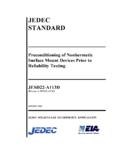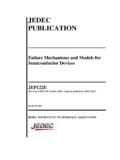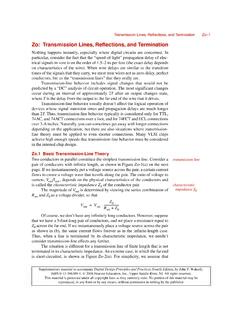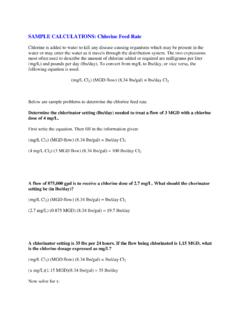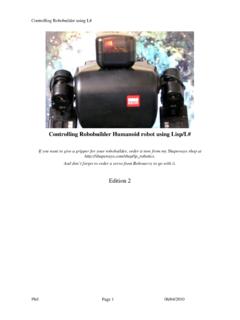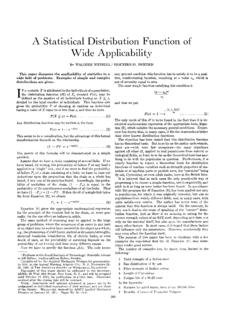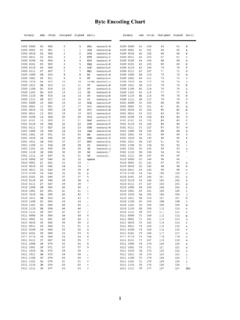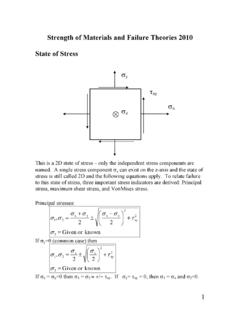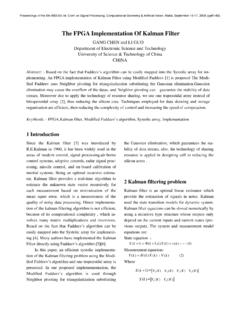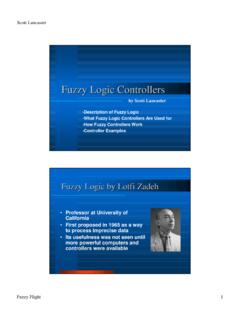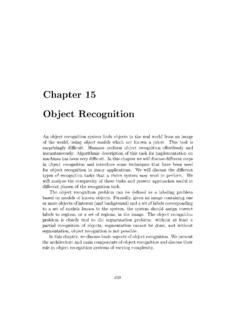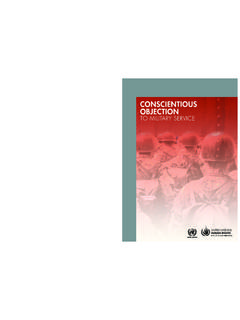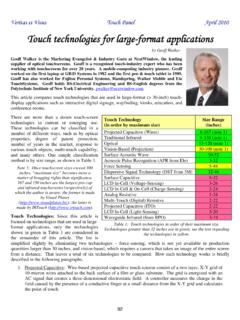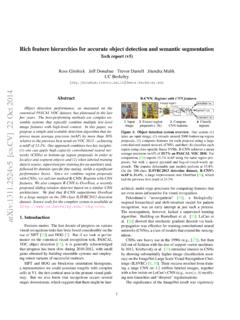Transcription of Real-time doors and windows recognition in OpenCV using ...
1 Real-time doors and windows recognition in OpenCV using SURF for a guiding ROBOT 1 object recognition in computer vision, this is the task of finding a given object (door and windows in our case) in an image or video sequence. Humans recognize a multitude of objects in images with little effort, despite the fact that the image of the objects may vary somewhat in different viewpoints, in many different sizes / scale or even when they are translated or rotated.
2 Objects can even be recognized when they are partially obstructed from view. This task is still a challenge for computer vision systems in general. Feature-based methods - A search is used to find feasible matches between object features and image features. - The primary constraint is that a single position of the object must account for all of the feasible matches. - Methods that extract features from the objects to be recognized and the images to be searched. surface patches corners linear edges Invariably all of them employ machine learning, because the computer has to first 'learn' that a particular bunch of pixels with particular properties is a door or window, remember that information, and use it in future to say whether the query image has a door or not.
3 Training images are the images which the detector uses to learn information. Query images are the images from which the detector, after learning, is supposed to detect object (s). Generally, our aim in such experiments would be to achieve robust object recognition even when the object in a query image is at a different size or angle than the training images called scale in-variance and rotation in-variance respectively. 1. Match Template: Template matching is a technique for finding areas of an image that match (are similar) to a template image (patch).
4 To identify the matching area, we have to compare the template image against the source image by sliding it. By sliding, we mean moving the patch one pixel at a time (left to right, up to down). At each location, a metric is calculated so it represents how good or bad the match at that location is (or how similar the patch is to that particular area of the source image). For each location of T over I, you store the metric in the result matrix (R). Each location in R contains the match metric.
5 Disadvantages: This approach consumes huge memory and is relatively slow. Real-time doors and windows recognition in OpenCV using SURF for a guiding ROBOT 2 2. OpenCV objdetect module: The standard method in OpenCV to detect objects is to use its ready-made objdetect module, which uses the method of Haar cascade classifiers proposed by Viola and Jones. After training with thousands of positive and negative images for days on end, you can get a classifier file which contains all the training information.
6 Load it into your program and you are ready to detect your object . This method is well-tested, works fast, and is scale invariant. Disadvantages: Not rotation invariant and requires long training. There is a method for object detection that is scale and rotation invariant, robust, fast and most importantly, can work with a single training image. We are going to discuss about this in detail and implement it for recognition of doors and windows . 3. SURF (Speeded Up Robust Features): It is a robust local feature detector, first presented by Herbert Bay et al.
7 In 2006, that can be used in computer vision tasks like object recognition or 3D reconstruction. It is partly inspired by the SIFT descriptor. The standard version of SURF is several times faster than SIFT and claimed by its authors to be more robust against different image transformations than SIFT. SURF is based on sums of 2D Haar wavelet responses and makes an efficient use of integral images. This method Finds interest points in the image using Hessian matrices Determines the orientation of these points Uses basic Haar wavelets in a suitably oriented square region around the interest points to find intensity gradients in the X and Y directions.
8 As the square region is divided into 16 squares for this, and each such sub-square yields 4 features, the SURF descriptor for every interest point is 64 dimensional. It uses an integer approximation to the determinant of Hessian blob detector, which can be computed extremely quickly with an integral image (3 integer operations). For features, it uses the sum of the Haar wavelet response around the point of interest. Again, these can be computed with the aid of the integral image. Integral Image Much of the performance increase in SURF can be attributed to the use of an intermediate image representation known as the Integral Image".
9 The integral image is computed rapidly from an input image and is used to speed up the calculation of any upright rectangular area. Given an input image I and a point (x; y) the integral image IP is calculated by the sum of the values between the point and the origin. Real-time doors and windows recognition in OpenCV using SURF for a guiding ROBOT 3 Fast-Hessian Overview: Finds hessian based interest points/regions in a given integral image. Inputs: An integral image representation of an image.
10 Processes: Builds determinant of Hessian response map. Performs a non-maximal suppression to localize interest points in a scale-space. Interpolates detected points to sub-pixel accuracy. Outputs: A vector of accurately localized interest points. The SURF detector is based on the determinant of the Hessian matrix. In order to motivate the use of the Hessian, we consider a continuous function of two variables such that the value of the function at (x; y) is given by f(x; y). The Hessian matrix, H, is the matrix of partial derivates of the function f.
